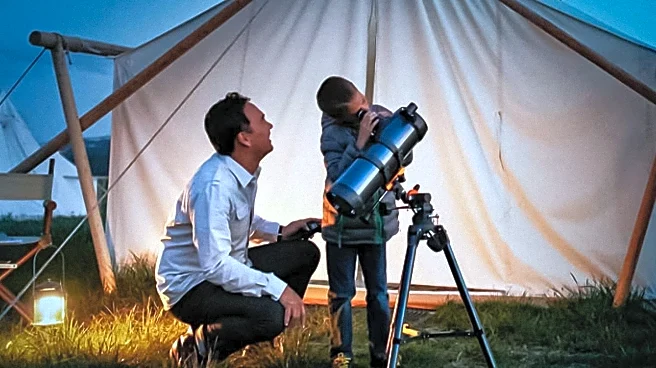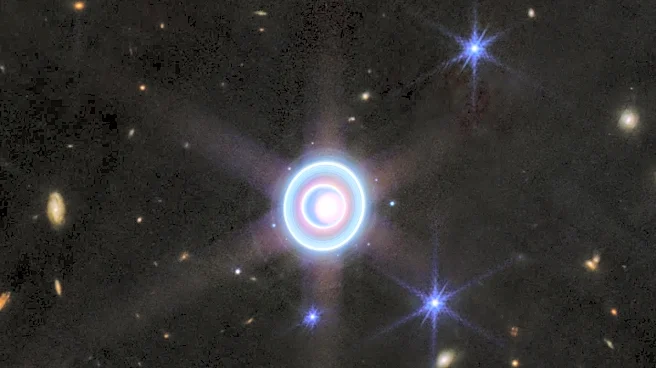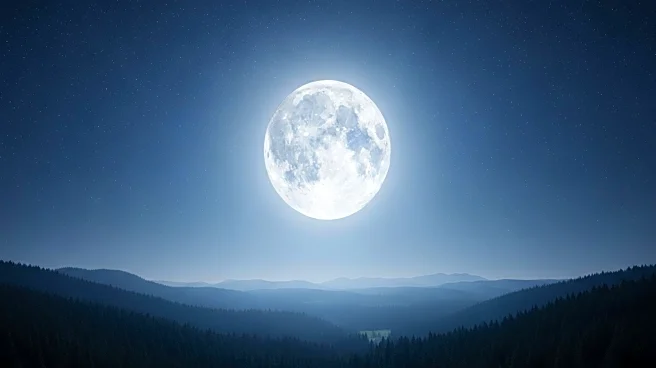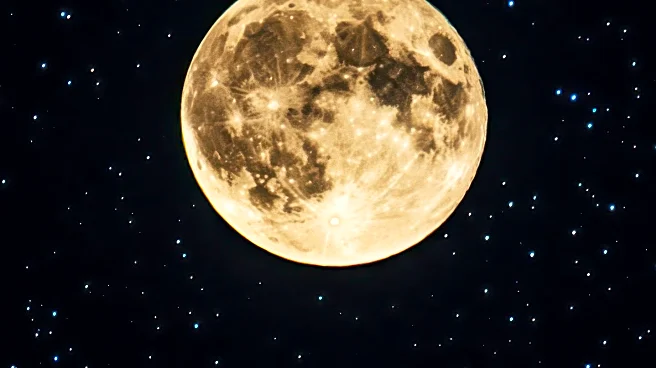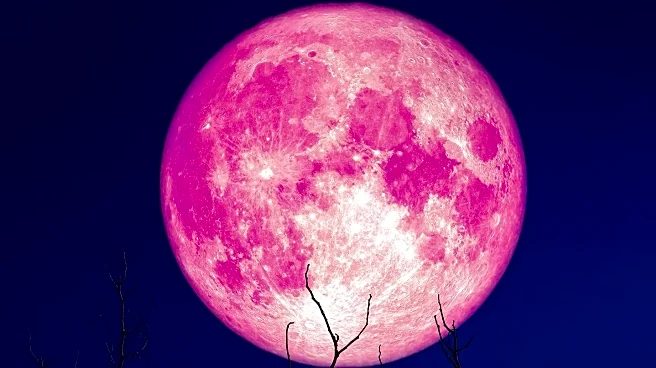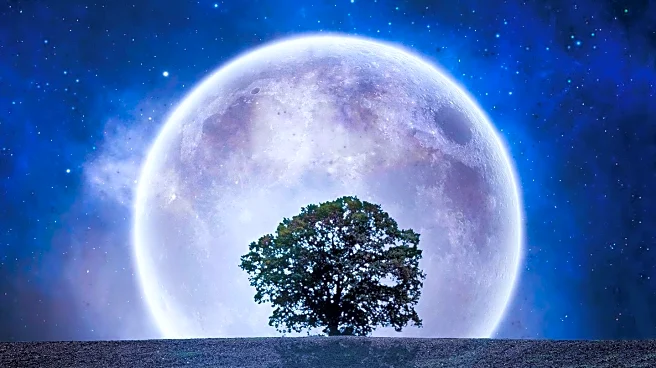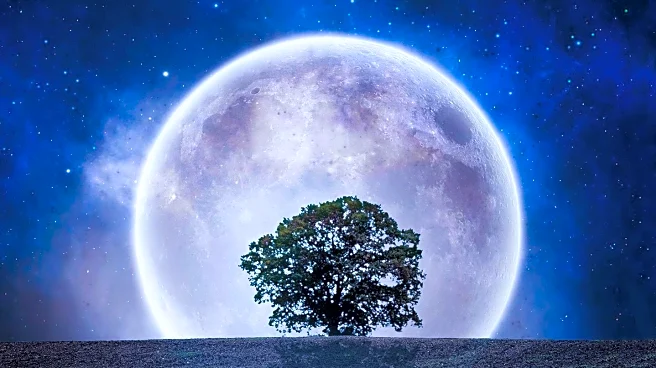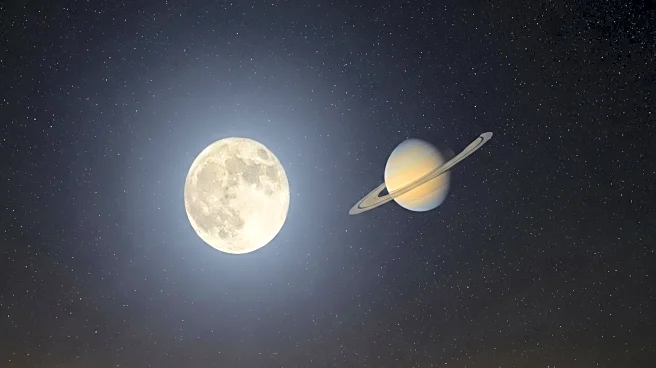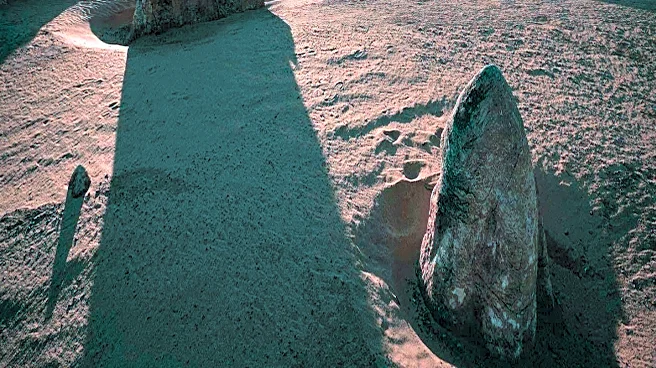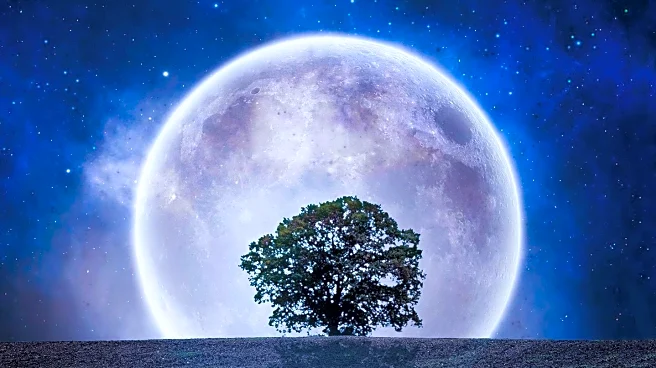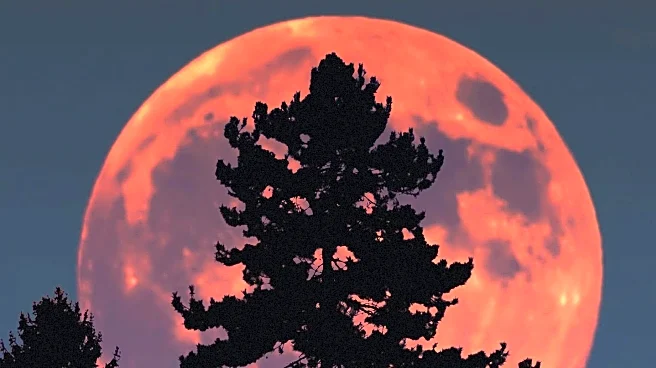What is the story about?
What's Happening?
The first supermoon of 2025, known as the harvest moon, is set to peak over Illinois. Supermoons appear up to 14% larger and 30% brighter than when the moon is at its furthest point from Earth. This astronomical event occurs when the moon is within 90% of its closest approach to Earth. The harvest moon is significant as it is closest to the autumnal equinox, a period important for crop harvesting in the Northern Hemisphere. The moon will peak over Belleville, Illinois, at 10:47 p.m. Central Daylight Time on Monday, October 6, according to the Old Farmer’s Almanac. The moon will rise at 6:15 p.m. on the same day. AccuWeather forecasts clear to cloudy skies with a chance of spotty thunderstorms, providing a mixed opportunity for stargazers.
Why It's Important?
The occurrence of a supermoon provides a unique opportunity for stargazers and astronomy enthusiasts to witness one of the brightest and largest full moons of the year. This event can increase public interest in astronomy and natural phenomena, potentially boosting local tourism and community events centered around stargazing. The harvest moon's timing with the autumnal equinox also highlights the cultural and agricultural significance of this period, reminding communities of traditional harvesting practices. The event may also inspire educational activities and discussions about lunar cycles and their impact on Earth.
What's Next?
Following the harvest supermoon, there will be two more supermoons visible in 2025: the Beaver moon on November 5 and the Cold moon on December 4. The St. Louis Astronomical Society plans to host a stargazing event at the Gateway Arch on October 26, providing further opportunities for public engagement and education. These events may encourage local organizations to host similar activities, fostering community involvement and interest in astronomy.
Beyond the Headlines
The supermoon phenomenon can serve as a reminder of the interconnectedness of natural cycles and human activities, particularly in agriculture. It may also prompt discussions on the cultural significance of lunar events across different societies, including Indigenous and colonial American traditions. The event underscores the importance of preserving dark skies for astronomical observations, which can lead to conversations about light pollution and environmental conservation.
AI Generated Content
Do you find this article useful?
